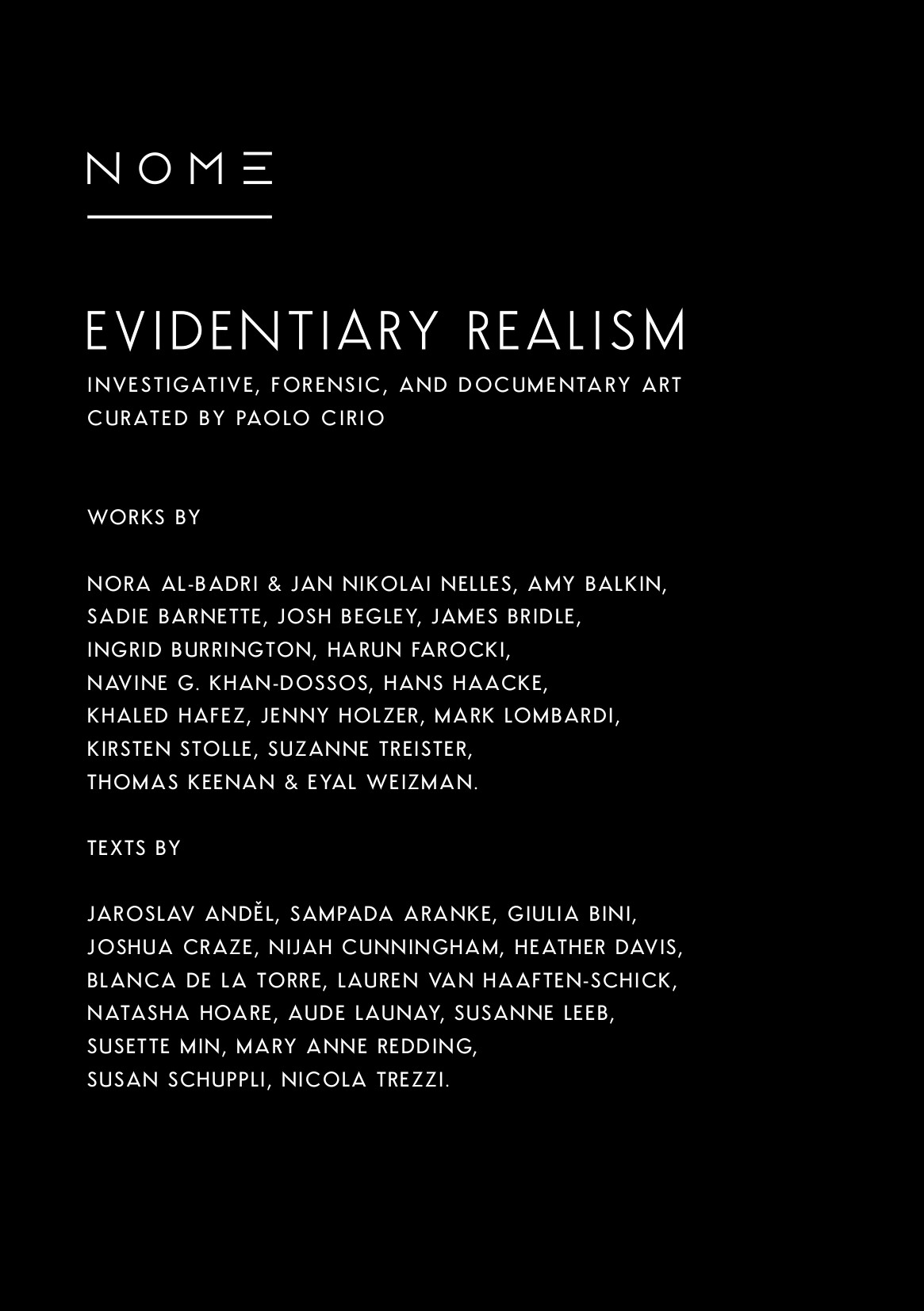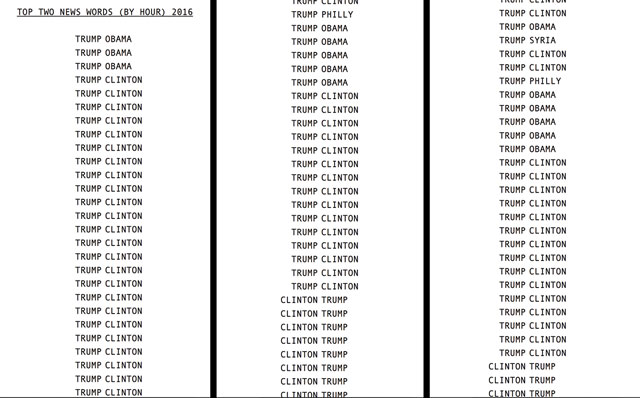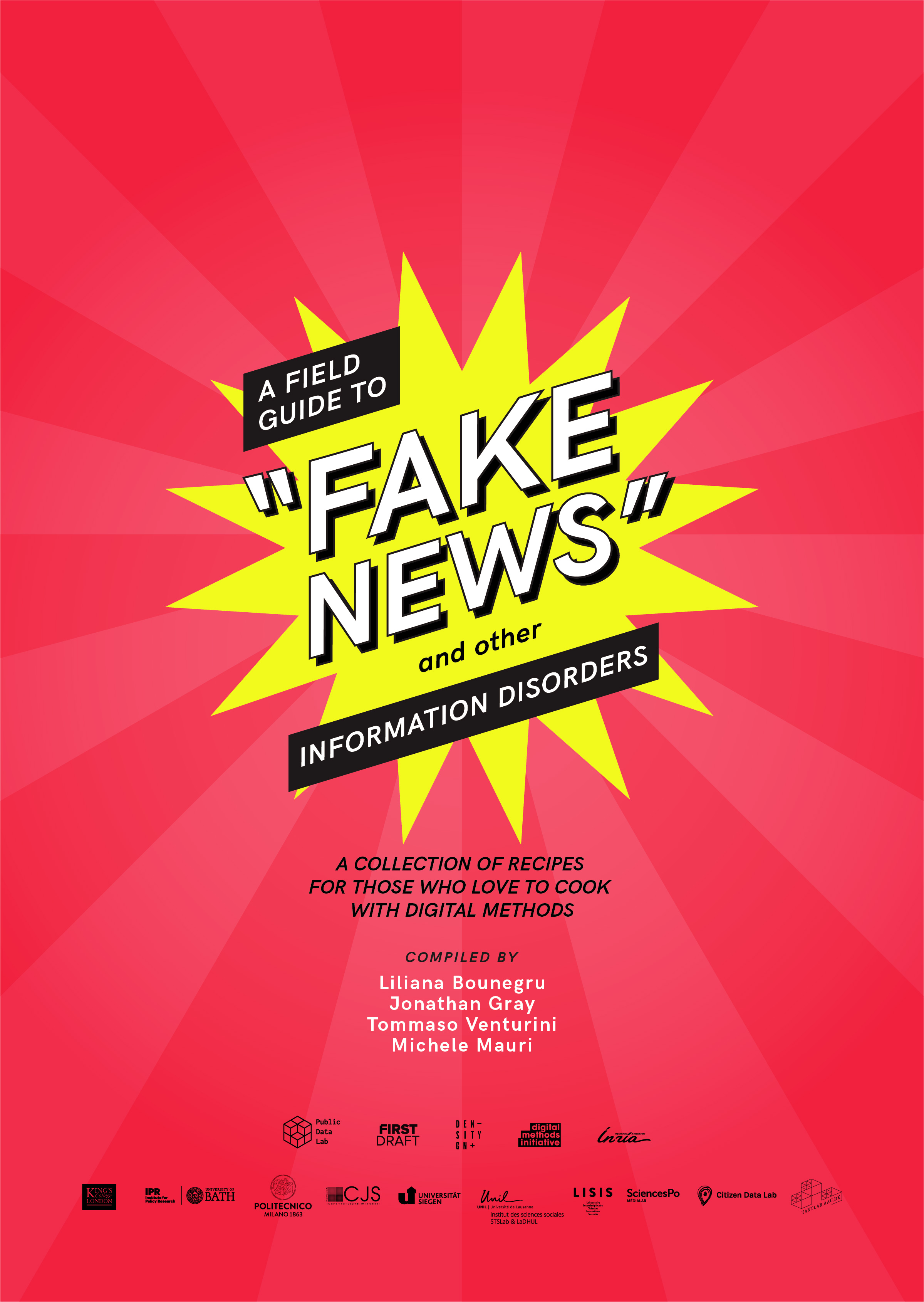Evidentiary Realism: Investigative, Forensic, and Documentary Art (2017)
Filed under catalogue | Tags: · art, corruption, documentary, forensics, human rights, journalism, politics, realism, surveillance, truth

“Evidentiary Realism aims to articulate a form of realism in art that portrays and reveals evidence from complex social systems. The truth-seeking artworks featured explore the notion of evidence and its modes of representation.
Evidentiary Realism reflects on post-9/11 geopolitics, increasing economic inequalities, the erosion of civil rights, and environmental disasters. It builds on the renewed appreciation of the exposure of truth in the context of the cases of WikiLeaks, Edward Snowden, the Panama Papers, and the recent efforts to contend with the post-factual era.”
The exhibition was held at Fridman Gallery, New York, 28 February-31 March 2017, and Nome Gallery, Berlin from 1 December 2017-17 February 2018.
Curated and organised by Paolo Cirio.
Artworks by Nora Al-Badri & Nikolai Nelles, Amy Balkin, Sadie Barnette, Josh Begley, James Bridle, Ingrid Burrington, Hans Haacke, Khaled Hafez, Jenny Holzer, Harun Farocki, Navine G. Khan-Dossos, Thomas Keenan & Eyal Weizman, Mark Lombardi, Kirsten Stolle, Suzanne Treister.
Texts by Jaroslav Anděl, Sampada Aranke, Giulia Bini, Nijah Cunningham, Heather Davis, Blanca de la Torre, Lauren van Haaften-Schick, Natasha Hoare, Aude Launay, Susanne Leeb, Susette Min, Mary Anne Redding, Susan Schuppli, and Nicola Trezzi.
Publisher NOME, Berlin, 2017
Creative Commons BY-NC-ND License
ISBN 9780244342739, 0244342733
171 pages
Project website
Curator, exh. reviews
WorldCat
Media-N, 12(3): Uncovering News: Reporting and Forms of New Media Art (2017)
Filed under journal | Tags: · aesthetics, art, art criticism, fake news, journalism, media activism, media art, new media art, propaganda, reality, tactical media, truth

“As the highly contested term “fake news” has become omnipresent in our media sphere and as the hacking of private networks for political gain have dominated the global news cycle, Media-N’s new issue is well positioned to uncover the complex relationship between media art and the multifarious forms of news reportage. We find in this wide-ranging journal issue, new media artists, writers, and theoreticians attempting to reveal, expose, and protest the production, rhetoric, and dissemination of news. Exploiting or subverting the existing network or creating alternative technologies, codes, or platforms, new media artists has probed the hegemonic grip of tradition forms of media production. Employing the raw material of journalism or intervening in the distribution and transmission of news information, artists have effectively critiqued or reimagined the unstable and fluid spaces of the contemporary news sphere. The nature of news information and its relationship to concepts of reality, truth, aesthetics, and the public and private are all at play in this issue.” (from Introduction)
With contributions by Erica Levin, Randall Packer, Kris Paulsen, Erin McElroy, Lisa Moren, Brandon Bauer, Rick Valentin, Francesca Franco, Yasuhito Abe, Vincent Cellucci, Jesse Allison, Derick Ostrenko, and Mina Cheon.
Guest editors: Abigail Susik and Grant Taylor
Publisher New Media Caucus, 2017
Open Access
ISSN 1942-017X
A Field Guide to “Fake News” and Other Information Disorders (2018)
Filed under book | Tags: · deception, fake news, internet, journalism, media, memes, politics, social media, trolling, truth, web

“This guide explores the use of digital methods to study false viral news, political memes, trolling practices and their social life online.
It responds to an increasing demand for understanding the interplay between digital platforms, misleading information, propaganda and viral content practices, and their influence on politics and public life in democratic societies.”
Compiled by Liliana Bounegru, Jonathan Gray, Tommaso Venturini, and Michele Mauri
Publisher Public Data Lab, January 2018
Creative Commons BY 4.0 License
211 pages

